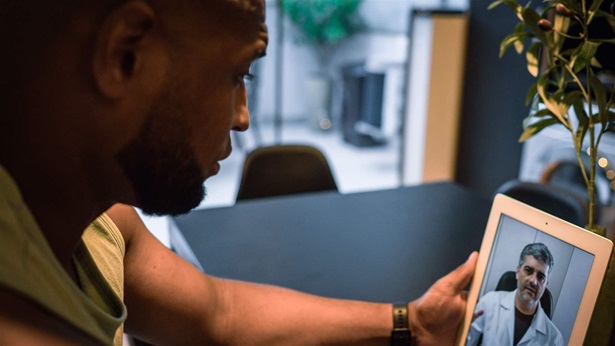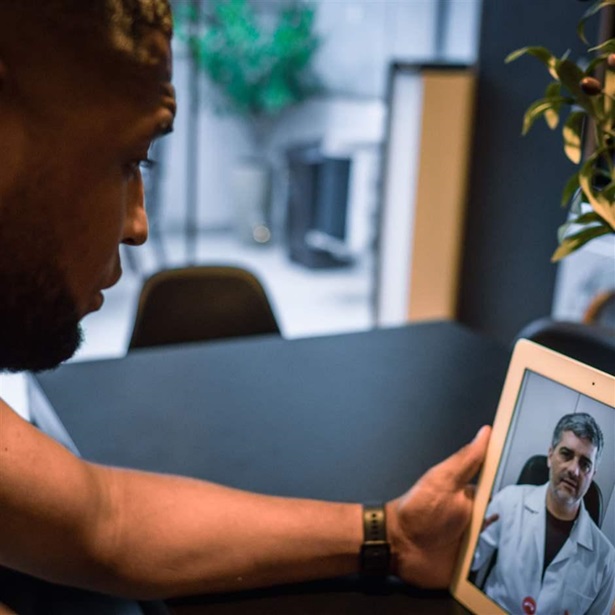With a Boost from Congress, Telehealth Can Help Stop Overdose Deaths
Bipartisan legislation would permanently expand access to remote treatment for opioid use disorder
Telehealth was a game-changer for people struggling with opioid use disorder (OUD) during the COVID-19 pandemic, with more patients able to start and stay in treatment over the past three years than in previous years. But unless Congress acts, this critical lifeline to care will disappear.
The Telehealth Response for E-prescribing Addiction Therapy Services (TREATS) Act, a bill before Congress, would allow patients with OUD to receive a prescription for buprenorphine—a lifesaving medication proven to reduce overdose deaths and help people stay in treatment—by video or audio-only (i.e., telephone) appointments without first being evaluated in person by a health care provider. Temporary regulations put in place during the pandemic currently allow patients to receive care this way. Unfortunately, these regulations will expire at the end of the year, once again putting lives at risk.
Prior to the pandemic, federal law required health care providers to see patients in person before prescribing buprenorphine. But in March 2020, to encourage physical distancing, the Drug Enforcement Administration allowed providers to prescribe the medication remotely. As a result, for the past several years patients have been able to access treatment without having to worry about lack of transportation or child care, taking time off work, or other circumstances that could affect their access to care. Patients also haven’t had to endure long wait times for appointments or face the stigma and judgment that too often accompany in-person office visits. Simply put, remote access to buprenorphine has helped save lives.
And evidence shows that expanding buprenorphine access via telehealth has been transformative for people with OUD. For example, remote prescribing helped close gaps in care for communities with already-low treatment rates. Veterans accessing buprenorphine via telehealth were more likely to stay in treatment than those seen in person. More people who live in remote rural areas or lack adequate transportation or child care got the care they needed. And Medicare recipients who received telehealth services were more likely to maintain their treatment and less likely to overdose.
Notably, many of these patients received buprenorphine treatment via audio-only visits, which are critical for connecting to treatment people without reliable internet access or the technology to conduct video calls. Numerous studies show that audio-only care is as safe, effective, and high-quality as audio-video appointments; that patients and providers are satisfied with the care provided and delivered; and that patients are no more likely to misuse their prescriptions, or give or sell them to another person, a practice known as diversion.
In fact, concerns that remote buprenorphine prescribing could lead to a spike in diversion are unfounded. The Drug Enforcement Administration and the National Institute on Drug Abuse have both stated that expanding access to buprenorphine decreases diversion of the drug. And when it does happen, it’s usually by people unable to access legal treatment who are trying to manage withdrawal symptoms. Importantly, greater access to buprenorphine over the past three years has not led to more buprenorphine-related overdoses.
Medications like buprenorphine are hands down the best way to treat OUD and curb overdose deaths, but these therapies remain out of reach for too many patients: Barely 1 in 4 people in need of services receiving any. Remote access to buprenorphine can help close this treatment gap by removing obstacles to care, but as long as remote prescribing rules remain temporary—and as long as TREATS is not passed—the treatment gap will never fully close. Health care providers must invest time and resources into setting up remote care, which they may be hesitant to do if telehealth provisions are not here to stay. In one study, addiction providers noted they were reluctant to conduct remote evaluations of patients due to lack of clarity surrounding the telehealth guidelines and fears about transitioning patients back to in-person care; at the same time, the clinicians offered unanimous support for making the temporary regulations permanent.
The TREATS Act could permanently transform how patients receive opioid use disorder treatment. We thank U.S. Representatives Brian Fitzpatrick (R-PA) and David Trone (D-MD), as well as U.S. Senators Sheldon Whitehouse (D-RI), Lisa Murkowski (R-AK), Mark Warner (D-VA), and Marsha Blackburn (R-TN), for their leadership on this legislation, and we urge their colleagues to join them in passing the TREATS Act. As people with OUD and their loved ones can attest, lives are at stake, and they can’t afford to go back. Time is running out.
Brandee Izquierdo, Ph.D. is the director of behavioral health programs, and Sheri Doyle is a senior manager with the substance use prevention and treatment initiative, at The Pew Charitable Trusts.
This piece originally ran in The Hill on January 11.
MORE FROM PEW
Explore Pew’s new and improved
Fiscal 50 interactive
Your state's stats are more accessible than ever with our new and improved Fiscal 50 interactive:
- Maps, trends, and customizable charts
- 50-state rankings
- Analysis of what it all means
- Shareable graphics and downloadable data
- Proven fiscal policy strategies
Welcome to the new Fiscal 50
Key changes include:
- State pages that help you keep track of trends in your home state and provide national and regional context.
- Interactive indicator pages with highly customizable and shareable data visualizations.
- A Budget Threads feature that offers Pew’s read on the latest state fiscal news.
















